| October 18, 2008 |  |
SpaceDaily Advertising Kit |
|
Hubble encounters further problems, delays: NASA Washington (AFP) Oct 17, 2008 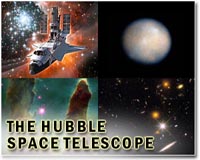 New technical problems on the Hubble Space Telescope, which is currently undergoing repairs, will further delay the resumption of the telescope's regular duties, NASA officials said Friday. The Hubble's operations team encountered anomalies with the telescope's "side A" this week and "is working diligently to understand the cause and options for proceeding," said Jon Morse, director of the A ... read more
New technical problems on the Hubble Space Telescope, which is currently undergoing repairs, will further delay the resumption of the telescope's regular duties, NASA officials said Friday. The Hubble's operations team encountered anomalies with the telescope's "side A" this week and "is working diligently to understand the cause and options for proceeding," said Jon Morse, director of the A ... read moreChina To Deliver Telecom Satellite To Pakistan  Beijing (XNA) Oct 17, 2008
Beijing (XNA) Oct 17, 2008China will launch a telecommunication satellite, dubbed PakSat-1R, for Pakistan in 2011. The satellite's chief contractor -- China Great Wall Industry Corporation (CGWIC) -- said on Thursday that a Long March 3B rocket will be used to put the satellite into orbit. It will launch from the Xichang Satellite Launch Center in the southwestern Sichuan Province. The company said ground ... more |
China's Shenzhou-19 astronauts return to Earth: state media
CORRECTED: China's Shenzhou-19 astronauts return to Earth: state media Thawing permafrost dots Siberia with rash of mounds UK 'not ready' for effects of climate change, experts warn How climate change turned Sao Paulo's drizzle into a storm Finland says supports EU goal to cut emissions 90 percent by 2040 US climate assessment in doubt as Trump dismisses authors CORRECTED: How can an electricity network go down in five seconds? How can an electricity network go down in five seconds? France, Germany and Italy failing to stop destructive fishing: NGOs
|
|
| Previous Issues | Oct 17 | Oct 16 | Oct 15 | Oct 14 | Oct 13 |
HiRISE Camera Reveals Rare Polar Martian Impact Craters Tuscon AZ (SPX) Oct 17, 2008
Tuscon AZ (SPX) Oct 17, 2008An odd, solitary hill rising part-way down an eroding slope in Mars' north polar layered terrain may be the remnant of a buried impact crater, suggests a University of Arizona planetary scientist who studied the feature in a new, detailed image from the HiRISE camera onboard NASA's Mars Reconnaissance Orbiter. The north polar layered deposits are stacked up to several kilometers thick and ... more Gamma-ray Bursts: The Mystery Continues  Huntsville AL (SPX) Oct 17, 2008
Huntsville AL (SPX) Oct 17, 2008People of the 'Deep South' love a good story and they're about to get a doozy. It begins next week when researchers from 25 countries converge on Huntsville, Alabama, to share the latest findings on the biggest explosions since the Big Bang itself. The 6th Huntsville Gamma-ray Burst Symposium 2008 convenes Oct. 20th and the talking won't stop for four straight days. One speaker after ... more Ghostly Glow Reveals Galaxy Clusters In Collision  Washington DC (SPX) Oct 17, 2008
Washington DC (SPX) Oct 17, 2008A team of scientists, including astronomers from the Naval Research Laboratory (NRL), have detected long wavelength radio emission from a colliding, massive galaxy cluster which, surprisingly, is not detected at the shorter wavelengths typically seen in these objects. The discovery implies that existing radio telescopes have missed a large population of these colliding objects. It also ... more |
blackhole:
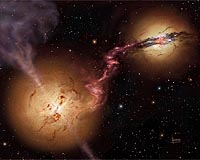 gamma: 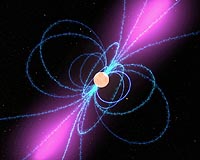 satellite-biz: 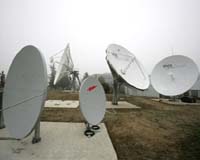 |
Young Earthlike Planets May Glow Brightly Enough To Be Found Boston MA (SPX) Oct 17, 2008
Boston MA (SPX) Oct 17, 2008Hot, young planets may be easier to spot because they stay that way longer than astronomers have thought, according to new work by MIT planetary scientist Linda Elkins-Tanton. For a few million years after their initial formation, planets like Earth may maintain a hot surface of molten rock that would glow brightly enough to make them stand out as they orbit neighboring stars. Elkins ... more Quantum Mechanical Hurricanes Form Spontaneously  Tucson AZ (SPX) Oct 17, 2008
Tucson AZ (SPX) Oct 17, 2008University of Arizona scientists experimenting with some of the coldest gases in the universe have discovered that when atoms in the gas get cold enough, they can spontaneously spin up into what might be described as quantum mechanical twisters or hurricanes. The surprising experimental results agree with independent numerical simulations produced by collaborating scientists at the ... more Hubble Status Report: Instruments Checked  Greenbelt MD (SPX) Oct 17, 2008
Greenbelt MD (SPX) Oct 17, 2008During the night of Oct. 15, Space Telescope Operations Control Center engineers at NASA's Goddard Space Flight Center turned on and checked out Side 'B' of Hubble's Science Instrument Control and Data Handling (SIC and DH) system. Subsequently, the Advanced Camera for Surveys (ACS), Wide Field Planetary Camera 2 (WFPC2) and Near Infrared Camera and Multi-Object Spectrometer (NICMOS) ... more ESA Closes In On The Origin Of Mars' Larger Moon  Parsi, France (ESA) Oct 17, 2008
Parsi, France (ESA) Oct 17, 2008European space scientists are getting closer to unravelling the origin of Mars' larger moon, Phobos. Thanks to a series of close encounters by ESA's Mars Express spacecraft, the moon looks almost certain to be a 'rubble pile', rather than a single solid object. However, mysteries remain about where the rubble came from. Unlike Earth, with its single large moon, Mars plays host to two ... more |
skynightly:
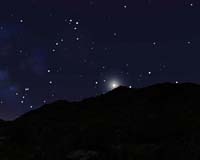 nuclear-doctrine:  earthquake: 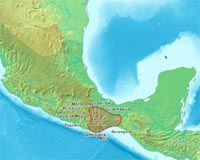 |
| Previous Issues | Oct 17 | Oct 16 | Oct 15 | Oct 14 | Oct 13 |
| The contents herein, unless otherwise known to be public domain, are Copyright 1995-2008 - SpaceDaily. AFP and UPI Wire Stories are copyright Agence France-Presse and United Press International. ESA Portal Reports are copyright European Space Agency. All NASA sourced material is public domain. Additional copyrights may apply in whole or part to other bona fide parties. Advertising does not imply endorsement, agreement or approval of any opinions, statements or information provided by SpaceDaily on any web page published or hosted by SpaceDaily. Privacy statement |